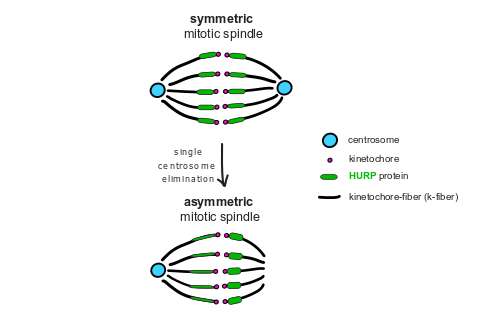The Meraldi group identified a first molecular mechanism of control of mitotic spindle by centrosomes
Cell division, the process by which a parent cell divides into two daughter cells, is essential for the survival, reproduction and growth of all organisms. To separate equally the chromosomes between two daughter cells, microtubules of the mitotic spindles called kinetochore fibers, attach each chromosome at kinetochores. It has been suspected that centrosomes regulate kinetochore fibers dynamics, but the exact mechanisms remain unknown.
The role of the protein HURP in cell division
In their study published in Current Biology, scientists of the Meraldi group have highlighted a first molecular mechanism by which centrosomes can control spindle function and kinetochore fiber dynamics during cell division. The researchers discovered how centrosomes indirectly control the dynamics of kinetochore fibers at their furthest end: the centrosomes control the length of the kinetochore fibers, which itself control the accumulation of a protein called HURP, a kinetochore fiber regulator.

The team of Prof. Meraldi will now try to determine how the HURP protein “senses” the length of kinetochore fibers and identify other proteins by which centrosomes regulate kinetochore fiber dynamics.
Posted by: Véronique Rosset
24 Oct 2019